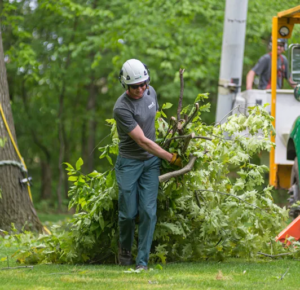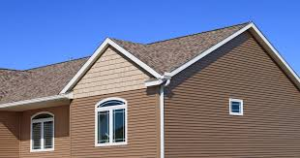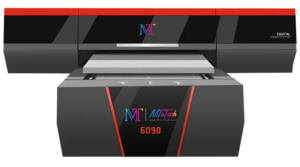Tree service consists of an array of professional tasks that ensure the health and safety of trees. Improving aesthetics and property value is crucial in urban and rural landscapes.
Before hiring a tree service, ensure they have professional organization credentials and are licensed and insured. Also, ask them to provide you with a written price quote. Click the Tree Service Chula Vista to learn more.

Trees are vital to the health, beauty, and sustainability of landscapes. Proper tree care and maintenance promotes plant growth, supports healthy trees, and minimizes the risk of limbs falling during severe weather, keeping property safe for people and animals alike.
A competent tree service evaluates specific tree needs and offers customized solutions, such as thinning, pruning, and stump grinding. Its experts also perform routine services like mulching, insect monitoring, and seasonal cleaning. They also provide emergency service to address storm damage, wildlife concerns, and more.
Consistent seasonal tree services support the long-term health and vigor of your landscaping investment. During the spring and summer, tree services may monitor for signs of disease or pest problems, prune branches to prevent falling debris during storms, and mulch to retain soil moisture. They may also inspect a tree for structural weaknesses and recommend additional services to protect it from winter damage.
When hiring a tree service, make sure the professionals are certified arborists. Look for the ISA (International Society of Arboriculture) logo to ensure that the company is trained and qualified to do work on your landscape. In addition, look for a tree service that employs best practices, such as refraining from topping, which is harmful to trees and creates weak branches prone to failure.
During the winter, tree service professionals protect against ice and snow damage by pruning vulnerable branches, wrapping sensitive species, and removing dead leaves. They can also help you select and install new trees to complement your existing landscape.
A skilled and reputable tree service will be knowledgeable about the needs of local trees, including soil conditions, water availability, and cultural factors. They will be able to suggest the best tree species for your site and offer tips for proper planting and care.
Gonzalez Tree Service and Maintenance is an experienced residential tree service provider in Staten Island. Its team of tree specialists provides pruning solutions to improve a tree’s aesthetic appeal, as well as remove and grind tree stumps. Its professionals are licensed and insured, and have over five years of experience in the industry. They are also equipped with equipment like spider lifts and bucket trucks for added safety.
Tree Removal
Tree service professionals specialize in the care and maintenance of trees, shrubs, and other plants in residential and commercial landscapes. They are trained in a wide range of essential care practices, including pruning to promote healthy growth and addressing disease-causing agents. They also have a deep understanding of tree physiology, allowing them to accurately diagnose and treat health issues. In addition, they work within local regulations when it comes to tree removal and other emergency services.
Whether it’s a small shrub or a large shade tree, the health and well-being of these plants are important for property aesthetics, climate regulation, and wildlife habitat. Through routine care, Tree Service can ensure that trees remain attractive, safe, and healthy throughout their lifespan.
Tree services can be used for a variety of purposes, ranging from minor trimming and pruning to more serious problems like tree felling or stump grinding. The latter involves using specialized equipment to grind down remaining tree stumps, preventing them from becoming tripping hazards or breeding grounds for pests.
Professional Tree Cutting and Removal
Taking down a tree is a complex process that requires the right training and expertise to do properly. It’s not something that can be done by homeowners, as misjudging a fallen tree’s direction can lead to severe injuries or costly property damage. Tree Service professionals are skilled at assessing each tree’s structure and determining the safest method for removal. They can also remove a tree in sections, avoiding potential damage to homes or power lines.
It’s a good idea to interview several different tree service providers to learn about their experience, pricing, and approach to the project. It’s also a good idea to check their credentials, such as business and contractor licenses and insurance coverage. This will help you choose the best company for the job. Also, it’s a good idea to check out customer reviews of the companies you’re considering. You may be able to find some useful information online or in a local directory.
Stump Grinding
Stump grinding involves the use of heavy machinery to grind the stump down. The machine uses a rotating cutter wheel to shred the roots into smaller pieces, which can then be removed from the yard or used as mulch. It is a faster and more efficient way to remove the stump than digging it out, and is a good option for homeowners who want to avoid hiring a contractor.
The service can also reclaim the space occupied by a tree, providing room for new plants or lawns. It can also be used to prevent trip-and-fall accidents by clearing away a hazardous tripping hazard. It can even improve a property’s aesthetics and increase the value of a home by improving curb appeal. Moreover, it can reduce the risk of fire damage to surrounding trees and shrubs by preventing the spread of fire to them.
It offers a wide range of services that include pruning, trimming, and cutting for residential and commercial properties. Its arborists perform comprehensive tree structure evaluations and provide tree care services such as plant health inspections and insect management solutions. The company can handle large scale projects, including removing diseased or dead trees and installing new ones. Its experts are available 24 hours a day to provide emergency tree service.
An arborist is a professional who has been trained and educated in the care of trees and woody shrubs. They can diagnose problems with trees and other plants, recommend treatments, and provide advice on the right nutrient mix for trees. They can also prune or trim trees, and perform soil testing to help determine the best placement for trees. They can also remove stumps and conduct emergency tree service.
Manhattan Tree Services provides tree removal, cutting, and stump grinding services to homeowners in New York City. The company also provides yearly inspection services for both residential and commercial properties. Its professionals are licensed, insured, and experienced in performing tree services. They can work on any size of trees and own some of the industry’s largest stump grinder machines. Its team can also handle emergency tree service requests, such as repairing damaged trees and cleaning up storm damage.
Tree Planting
Tree planting is a big commitment to your landscape and can have significant impacts. Tree service professionals will help ensure the proper selection and planting of trees so that they thrive for years to come. They understand the unique needs of each type of tree and your specific climate, allowing them to create the perfect environment for growth.
Adding trees to your yard or commercial property improves the quality of your outdoor space by adding visual appeal and creating a healthy environment for other plants and animals. Trees are also beneficial to soil health, stabilizing soil and reducing erosion and runoff, while enhancing the appearance of your property. Trees can also add value to your home or business and can make your property more attractive to prospective buyers.
Tree services are more than just cutting and removal, they can provide preventative maintenance and cleaning to keep your trees and shrubs healthy. Keeping your trees and shrubs free of pests, disease, and unwanted growth will allow them to grow stronger, live longer, and look their best. Tree trimming, pruning, and regular upkeep are a great way to maintain the health of your landscaping while maximizing the enjoyment and benefits that it provides.
A professional tree service company will be able to perform these tasks more efficiently than you can when trying to do it yourself. This saves you time and stress and allows you to focus on other tasks. They can also provide advice on how to care for your trees and how to maximize their benefits.
When hiring a tree service, look for a certified arborist who has extensive knowledge of the best practices in tree planting. Ask for references and a consultation before choosing a tree service provider.
When a tree is planted incorrectly, it can lead to costly problems in the future. Common errors include placing the tree too close to buildings, outdoor structures, or power/utility lines. Poor placement can also result in overcrowded canopies or root damage to foundations. Professionals will carefully plan the location of each new tree, taking into account its mature size and root structure. They will also make sure that the area has adequate sunlight and wind protection, as well as the proper depth for drainage. They will also use mulch to help keep the roots cool and improve water absorption, preventing root heaving and damage to nearby properties.








